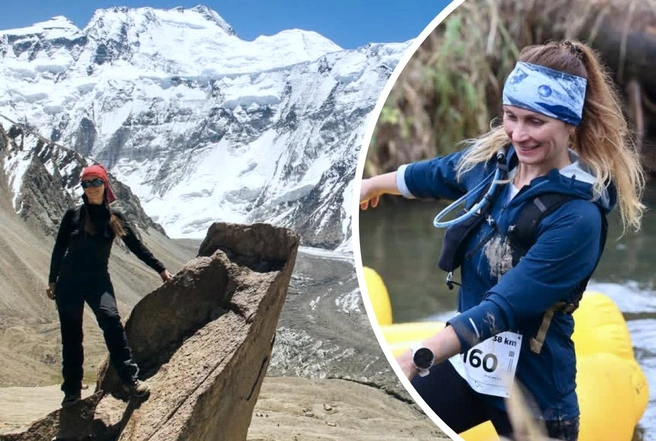A group of rescuers has halted the operation to save Moscow climber Natalia Nagovitsina. The reason for turning back is worsening weather. The 47-year-old athlete has been alone for over 10 days at an altitude of about 7 km on Peak Pobeda, one of the most dangerous peaks in Kyrgyzstan.
“Due to bad weather conditions and health problems of one of the group members, one rescue team decided to return to the base camp,” reports TASS, citing the Russian Mountaineering Federation.
On August 16, the Kyrgyz Ministry of Defense sent a helicopter to the peak, but the Mi-8 could not reach it and made a hard landing at an altitude of 4600 meters. Three injured people were evacuated by another helicopter. After that, ground rescuers set out for Natalia. By August 21, they had climbed to an altitude of 5800 meters and, according to estimates, were supposed to reach Natalia on August 22–23.
It was reported that a helicopter flight with Italian pilots was planned for today, but it was postponed due to non-flying weather.
A friend of Natalia Nagovitsina expressed the opinion that the rescue team’s priority is the search for the body of Italian Luca Singigilia — the climber went to Peak Pobeda to help Natalia, suffered severe frostbite, and later died from brain edema.
“The news is even worse than I could have imagined. Today’s helicopter flight has been canceled. Tomorrow there will be another snowfall. The group has returned to the base camp. The plan is, roughly speaking, to retrieve the Italian’s body.”
Apparently, the Italian has insurance, a desire to, so to speak, lay his body to rest. But it seems no one even plans to get from him to Natasha anymore
Meanwhile, the Kyrgyz Ministry of Defense reported that a departmental helicopter is on standby near Peak Pobeda “to join the operation to evacuate Nagovitsina at any moment.” As TASS writes, “no command to stop the search for the Russian woman has been received by the Kyrgyz Ministry of Defense yet.”
Natalia Nagovitsina set out to conquer Peak Pobeda as part of a small group of four people: with her were Italian Luca, German Günter, and a climber from Russia, Roman. All four managed to conquer the summit, but during the descent something happened and Natalia broke her leg. Roman, who was roped to her, left her a sleeping bag, some food and water. When he caught up with the foreigners, they turned back to save Natalia. But the weather let them down: Luca suffered frostbite and later died from brain edema. The remaining two climbers managed to descend, where they were picked up by a helicopter and taken to the hospital.
What happened on Peak Pobeda 11 days ago still remains a mystery. A call was made to Roman, the surviving participant of the ascent. He has two seven-thousand-meter peaks to his credit. The climber refused to tell the details of what happened with Natalia: “I’ve had enough of the crap that’s already been poured out. No need to make anything up, I won’t give any information.”
Four years ago, Natalia’s husband Sergei died while climbing Mount Khan-Tengri. At an altitude of 6.9 km, he suffered a stroke. Natalia refused to leave her husband alone, waiting for rescuers with him. A year later, she climbed this mountain again and installed a memorial plaque.
It was previously reported why Natalia decided to climb the peak. The climber did this. Natalia refused to leave her husband alone, waiting for rescuers with him.



